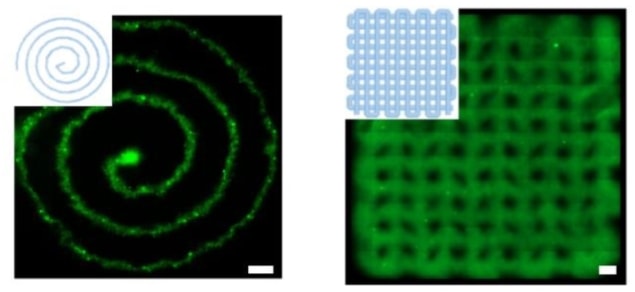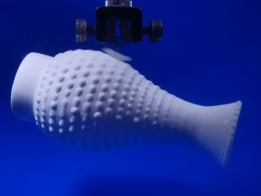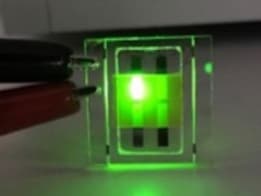Browse all
- SUBJECT CATEGORIES
- Astronomy and space
- Atomic and molecular
- Biophysics and bioengineering
- Business and innovation
- Condensed matter
- Culture, history and society
- Diversity and inclusion
- Education and outreach
- Environment and energy
- Ethics
- Instrumentation and measurement
- Materials
- Mathematics and computation
- Medical physics
- Optics and photonics
- Particle and nuclear
- Personalities
- Policy and funding
- Projects and facilities
- Publishing
- Quantum
- ARTICLE TYPES
- Collections
- Buyer’s Guide
- Jobs
- EXPLORE PHYSICS WORLD

Cells thrive in blood-based bioink
18 Nov 2019

Currently, a wide range of techniques and bioinks are being applied to the goal of 3D-printing artificial tissues and organs. Although each approach differs in terms of the deposition method and the mix of cells, biomaterial and bioactive molecules that compose the bioink, what they have in common is that all of them are limited to the “biofabrication window”.
“The biofabrication window concept refers to the compromises that have traditionally been made to design bioinks with reasonable print fidelity while maintaining cytocompatibility,” the authors tell Physics World. “For example, high shape-fidelity 3D constructs can be achieved with high polymer concentrations or crosslink densities, but these will produce a dense network that limits cell migration, growth and differentiation.”
As well as inhibiting cell proliferation through their dense protein networks, typically these structures also fail to reproduce the fibrous architecture of natural tissues. As an alternative, some researchers have turned to scaffolds of decellularized extracellular matrix: naturally grown animal tissues from which the cells have been stripped away. The problem with this approach is that some of the original biological material can remain on the resulting constructs, as well as residues of the chemicals used to remove the cells.
Constructs printed in this way possess a protein network that reproduces the multiscale structure of natural tissues, making them especially benign environments for cells. “Remarkably, unlike currently available systems, this nanocomposite bioink can self-support 3D cell cultures in serum-free conditions, promoting fast cellular densification and remodelling of the printed constructs,” say the researchers.
With such a high degree of cytocompatibility, it is no surprise then that the team’s PL-based bioink, which they call HUink, compromises on shape fidelity. Both the PL and CNC components of HUink exhibit low viscosities individually, and even after the slow process of polymerization and crosslinking (10–20 min), the resulting hydrogel is not strong enough to support freestanding structures.

As promising as the results may be, the researchers are realistic about the immediate applications of the research. “Despite the hype, we are still far from bioprinting functional organs for transplantation or regeneration in vivo,” they say. “The development of an advanced bioink (i.e. a biologically and biomechanically complex material) will be certainly be a technology challenge for the next years. In our opinion, the next step will be adding a layer of biological complexity to the HUink system. For example, the incorporation of different cell types or bioactive cues to explore a specific type of engineered tissue (e.g. bone or tendon).”
Marric Stephens is a freelance science writer based in Bristol, UK
Related jobs
Related products and services
-
Park Systems
Park Systems Features Park NX12 for Unsurpassed Affordable High Resolution NanoScale Imaging Required for Advanced Analytical Chemistry, Materials Research, and Multi-User Facility
-
Master Bond Inc.
White Paper: UV Curing Adhesives Shine
-
Asahi Spectra Co., Ltd.
LED Light Source: CL-1501 – Asahi Spectra
Related events
- Biophysics and bioengineering | Meeting Quantitative Methods in Gene Regulation V 9—10 December 2019 | London, UK
- Biophysics and bioengineering | Meeting Biological and bio-inspired optics Faraday Discussion 20—22 July 2020 | Cambridge, UK
- Biophysics and bioengineering | Conference 26th International Conference on DNA Computing and Molecular Programming 13—18 September 2020 | Oxford, UK





No comments:
Post a Comment